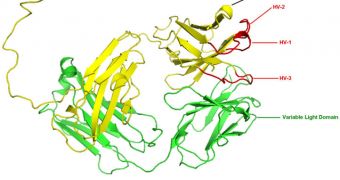A team of researchers at the University of North Carolina (UNC) School of Medicine is currently working on a genetics research project of massive proportions. The team here is trying to determine how various “flavors” of histone are influencing our DNA.
Inside the nucleus of each of our cells lie strands of deoxyribonucleic acid (DNA) that would measure about 6 feet (nearly 2 meters), if completely unfolded. In order for the material to fit in such a small space, it needs to be tightly packed.
One of the most fundamental breakthroughs in last century's DNA-related research was the realization of the fact that the way in which the acid is packaged is nearly as important as the material itself.
In charge of maintaining order in the way the material is packaged is an amino-acid called histone, a molecule that makes up the vast majority of the material that confines DNA.
The reason why histone is so important is because it bears considerable influence on the way in which different genes are turned on and off. This process is critical to the human body.
It regulates cell function, the synthesis of various chemical elements within our bodies, and may also underlie the development of extremely serious conditions, such as cancer and genetic maladies.
As such, understanding histones and their actions is very important. There are numerous variations, or flavors, of the amino-acid, and the UNC team is using antibodies to tease them apart, and then study them individually.
Histone flavors differ from each other very slightly, yet these variations are critical for the molecules' ultimate genetic effect. UNC experts explain that this is why they use antibodies for the investigation.
These immune system components can be fine-tuned in such a way that they bind to a specific flavor of histone only, completely ignoring all others.
This, in turn, allows researchers to see what type and amount of DNA is being packaged and controlled by which flavor of the amino-acid. This knowledge is invaluable for developing new therapies against some of the most horrible disease out there today.
In a surprising twist, the research group was able to determine that different variants of the amino-acid affect various genes in different manner, which is also something that needs to be considered.
“And this is where it gets complicated. Many companies make these antibodies that we scientists use in our labs – but there are so many different kinds of histones and types of tests we do that it's just not feasible for the companies to anticipate every single way that a given antibody can be used,” says Jason Lieb, PhD.
“Histones are essentially the key to the DNA library. They tell you which 'shelves' of that library – or areas of the genome – are open or closed to information moving in and out,” adds the expert, who is the leader of the project.
Lieb also holds an appointment as a professor of biology at UNC and is a member of UNC Lineberger Comprehensive Cancer Center,
“But since the differences between the different 'flavors' of histones are often extremely small, and it's likely that an antibody may react with more than one histone or in different ways depending on the type of test being used in the lab. It makes scientific precision very difficult,” he explains.
Details of the research conducted thus far at the university were published in the December 5 issue of the esteemed scientific journal Nature Structural and Molecular Biology.

 14 DAY TRIAL //
14 DAY TRIAL //